Students of all ages will benefit from reflect on and chronicle their lives from A to Z.
Students
- create a pictorial autobiography using the letters from A to Z.
- develop narrative writing skills.
- plan/create visual images that represent significant life events and interests.
narrative, writing, autobiography, ABC book, icebreaker
Materials Needed [shopmaterials]
- drawing paper, writing paper
- art supplies, as needed
- scanner (optional)
Have students write the 26 letters of the alphabet down the left-hand side of a sheet of writing paper. Then have them think of a word or phrase that expresses something important in their lives — an event, a person, a skill, a favorite something, a word that describes them
For Younger Students
Young students might select, or be assigned, 2 or 3 letters to plan, write, and illustrate. Combine all students efforts to create a nice A to Z bulletin board display.
For Older Students
Upper elementary and older students might plan to create A to Z books in which each letter stands for a word or phrase about them. They might write a sentence or a paragraph to explain the importance of each word/phrase that was chosen. (Caption length will vary by grade/ability level.) They might include photos, artifacts, or drawings to bring the pages of their books to life. They might be required to use technology (computers, a digital camera, a scanner).
If this becomes a major student project, you will want to provide students with a timeline that details when they should have their draft/design plan completed and deadlines for captions/narratives and drawings/images. The timeline might require students to hand in pages A to H one week, I to P the next week, and Q to Z the final week.
If students create personal ABC books, you might have each student
- design an original cover page.
- come up with a title for her/his book.
- share his/her book with classmates.
In addition, you might videotape the students’ oral presentations and create a CD of the best books and/or book pages.
This lesson is a nice self-esteem builder. It can also make a good getting-to-know-you activity at the start of the school year.
Assess student work based upon originality, neatness, writing, organization, and other key elements of your curriculum. If the students give oral presentations, you might assess their tone, volume, pace, word choice, and eye contact with the audience.
Leah Bivins, Colfax Elementary School in Pittsburgh, Pennsylvania
Education World®
 2005 Education World
Trending
Good Grief, It’s Grammar Time! Are grumbles all you hear when teaching grammar? Try a fresh approach — a few new “hooks” your students will remember — and check out a bunch of grammar sites on the Internet that will placate even the loudest grammar grumblers! Grammar! Can’t live with it; can’t live without it. As an English teacher in a middle school, it is incumbent on me to teach that most dreaded of subjects. But I’ve found that there ARE ways to make it a little less odious. Trying to humanize grammar as much as possible, I give students “hooks” to help them remember the rules. Let me share a few with you. When I teach the progressive tense, I spin a tale about a family on my block, the ING family.
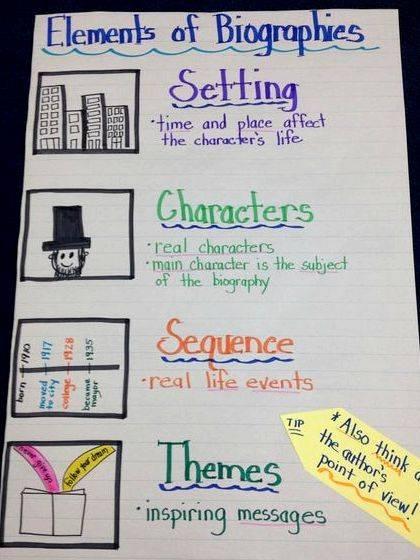
All in this family have the same last name. There is the dad, workING, the mom, inventING, and the children, learnING and studyING. The progressive family includes the present progressive, is or are studyING, and the past progressive, was or were studyING. When I teach the perfect tense, I tell my class about my husband who, fortuitously, is named Ed. I spin a tale about a perfect person I know who is named ED, and that all in this family also have the same last name. The dad’s name is workED, the mom inventED, and the children learnED and studiED. The perfect family includes the present perfect, have or has workED, and the past perfect tense, had workED. Then we go on to discuss “dysfunctional families,” the irregular verbs. When I teach indefinite singular pronouns, I draw a chart on the board. After students have become familiar with the four words on the chart, they will know sixteen indefinite singular pronouns. The chart looks like this: an(any) body no one every thing some other If one word on the left can be combined with any word on the right, an indefinite singular pronoun is formed. Anybody, anyone, anything, and another are all indefinite singular pronouns. I found it is definitely easier for my students to remember four words than sixteen. When introducing transitive and intransitive verbs, I draw a giant letter T on the board and a giant letter I. Then I try to hang a direct object (DO) and an indirect object (IO), looking like little DO and IO apples on the tips of the T. I can fit one on each end; however, when I hang direct and indirect object apples on the ends of the capital I, I tip it over, spinning a tale about how the puny letter I can’t support the objects’ weight. In my teaching, I try to use visual aids or tell stories humanizing grammar, trying to make learning it enjoyable. Zipping through the concepts, I try not to spend any more time than I have to, but still cover all the concepts that need to be covered. WHICH GRAMMAR SKILLS ARE EMPHASIZED ON STANDARDIZED TESTS? I also review standardized tests my students will be taking in high school: the SAT and ACT College Board Exams, the PSAT National Merit Scholarship Exam, and English SAT Achievement tests, to get an idea of what grammar skills my students will be expected to know well by the time they finish high school. Those are the concepts I most emphasize. Regardless of the exam, I’ve found that skill in English is essential. For National Merit Scholarships, the PSAT English score is counted twice and the math score once. The ACT College Board Exam includes English, reading, math, and science. In essence there, too, verbal ability counts twice. If a student chooses to attend a selective college that requires SAT Achievement Tests, the school usually requires that the student take an achievement test in English, math, and his area of specialty. The SAT College Board Exam also relies heavily on verbal ability. When I reviewed those tests, I found that several concepts were emphasized more than others. The concepts I found emphasized most often were: Correct use of commas, semi-colons, apostrophes, quotation marks, and hyphens in sentences. When to use a possessive pronoun and when to use a contraction: it’s vs. its. Correct use of who vs. whom especially when whom is part of a prepositional phrase in the beginning of a sentence: To whom should I give this? Use of subject pronouns vs. object pronouns especially with linking verbs and in compound prepositional phrases: It is I. Keep this between you and me. The use of his/her or they with indefinite pronouns: Will everyone please pass up his or her paper? Correct verb usage in sentences with neither/nor and either/or conjunctions: Neither Tom nor the boys go. Neither the boys nor Tom goes. Correct use of which, who, or that in sentences. Avoiding dangling modifiers and misplaced modifiers: Do you know what I am speaking about? Use of active voice, verb consistency, and parallel construction in sentences. Avoiding redundancy. The rhetoric sections of these tests frequently emphasize the ability to identify main idea and author’s bias. The ability to identify a logical order for sentences or paragraphs in a long passage is also essential. I frequently saw questions concerning the proper use of affect and effect. As the school year goes on, I emphasize to the students when I think a grammar or rhetorical concept is really important and when it is one students need to know. I take my job very seriously. Whether it be through cajolery or storytelling, I try to get across to my students essential concepts. Just as middle school teachers are influenced by how much or how little the teachers our students had before us taught, so too must we be concerned with what skills our students need to know in order to do well in the classes they have after us. Middle school teachers cannot teach in isolation. GRAMMAR ON THE WEB! If you and your students are hooked up to the Internet, you’ll have access to dozens of Web sites that focus on grammar! Be sure to check out some of these sites: Common Errors in English This site lists common errors in word usage in the English language. Each example provides a sample of wrong usage and the correct usage. 11 Rules of Writing A “concise guide to the most commonly violated rules of writing” from a teacher of a writing course for college freshmen. The site provides examples for each of the 11 rules and links to additional Internet grammar resources. Schoolhouse Rock Click on the Grammar Rock section of this popular TV show’s Web site to find connections to the lyrics of such popular tunes as “Unpack Your Adjectives,” “Lolly, Lolly, Lolly, Get Your Adverbs Here,” “Conjunction Junction,” and “Busy Prepositions.” Article by Glori Chaika Education World® Education World Links last updated1/26/2012
Icebreakers Volume 12: Excellent Activities for Getting Students Warmed Up Are you all set for the first day of school? Or are you still searching for the perfect activities for that day? Included: More than a dozen new icebreakers plus links to 150 more! Students in some communities are back in school already. In many other locales, excited conversations fill school hallways as teachers prepare their classrooms for the big day. One of teacher Heather Migdon’s favorite activities is to have her students at Dogwood Elementary School in Fairfax County, Virginia, write a letter of introduction to her. The students’ letters help her get to know them and their interests. She also finds the letters to be a useful diagnostic tool. She can see immediately some of the language and writing skills she needs to work on as a class and with individual students. Still looking for more ideas? Don’t forget our archive of more than 150 icebreaker activities. Another of Migdon’s favorite first-day activities is to have students write a “Who Am I? riddle.” “Students write four or five statements about themselves followed by the last line, the question “Who Am I?” explained Migdon. “I put the students’ riddles up as a bulletin board and let students guess each person. The first person to guess correctly gets to choose who guesses next.” Later, Migdon compiles those riddles into a book that the students can revisit and enjoy all year long. Migdon usually tries to share at least one read-aloud book during the opening days of school. Chrysanthemum, by Kevin Henkes, and First Day Jitters, by Julie Danneberg, are favorites. Most essential to her, though, is More Than Anything Else by Marie Bradby. More Than Anything Else is an excellent tool for starting a discussion about students’ goals for the school year, said Migdon. “The biographical story of Booker T. Washington’s youth,” she explained, “uses beautiful language and illustrations to show how he learned to read as a young boy. After reading the book, we talk about his goals and how his determination to achieve them made them a reality.” LEARNING STYLES AND BASEBALL CARDS Pamela Tempest, a teacher at Hudson (Ohio) Middle School was another contributor to the Middle Web listserv discussion. During the opening days of school, Tempest provides each student in her classes with a file folder to decorate and set up for use as a work portfolio. “We also talk about learning styles and multiple intelligences,” said Tempest. “I have students take a multiple intelligence survey. Then I have them note right on their folders what their learning preferences are and what their learning strengths are.” Those notes serve as a reminder to the students and their teacher throughout the year. For students, those notes remind them in moments of frustration that they do have learning strengths. Tempest has many icebreaker activities that she uses in the opening week. One of her favorites is a language arts icebreaker that engages students in writing and interviewing their peers. Students choose a partner to interview. They use the information from that interview to create a baseball card about the person they interviewed. A digital picture of the student appears on the front of the card and the information appears on the back. “I will lay out the completed cards with the fact-side up (picture side down), and each student has a chance to guess which description belongs to which student,” Tempest added. Then she puts plastic organizer pages into an album and slides all the cards into the plastic sleeves. “Kids enjoy looking at the cards all year long,” she said, “and new students to the class love to look through it and learn about their classmates.” TWELVE MORE ICEBREAKER ACTIVITIES Has Heather Migdon or Pamela Tempest given you a new idea for an icebreaker activity? If you’re still searching for the perfect idea, perhaps one of the ideas below submitted by Education World readers will fill the bill. And don’t forget our Icebreaker Activities Archive. There you will find a dozen volumes of icebreakers — more than 150 ideas! for fun ways to get to know your students! Two Truths and a Lie. Give each student an index card. Have them write on the card three truths about themselves and one lie. Model the activity for them based on your own life, so they can see how the lie must be something that is believable in light of the truths they list. When they guess one of your truths as the lie, tell the real story that goes along with the truth. Continue until they uncover the lie. Have each student write his or her own truths and lie. Then do 3 to 5 of them each day during the first week of school. When you have a lot of students who know one another, do not name the author of the truths and lie. Have students guess who authored the card.Mary Lou Bettez, Flat River Middle School, Coventry, Rhode Island Alien Greeting This is a fun and silly first-day activity. Arrange students into a circle. Have them pretend they are from another planet. Have them think of a sound and motion that might be used as a greeting on that planet. (A sound and motion that would replace a typical American greeting such as a quick wave and a “Hi!”) Once students have decided on their greeting, start the activity by using your alien greeting to greet the person to your left. That person should respond by repeating your greeting to you. Then, that person shares his or her alien greeting with the class and introduces him/herself to the next person in the circle. Continue until you have made your way around the circle. At the end of the activity, you might ask these questions: What did you learn from this activity? Is it more fun to send out energy or hold back energy?Brenda Aspelund, Aldrich Junior High School, Warwick, Rhode Island Where-We-Come-From Map If your school population is fairly transient, have each student write their name on a small sticky note. Then display a United States map and a world map. Have children take turns coming to the map and telling the class what their name is and where they were born. Then they put their sticky note on the state where they were born. If they were born in another country, find that country’s location on the world map. Follow up this activity by creating a graph that shows from which states students come; include an “other” bar on the graph for children who were born outside the U.S.Joan Kleindorfer, Timbercrest Elementary School, Deltona, Florida QA Hands Have students work in pairs to trace one of each other’s hands. When the hands are traced, have them write one of the questions below — or any other question of your choosing — on each finger of the hand. What is your favorite TV show? If you could choose your future career today, what would you be? What is your favorite school subject? If you could travel to anyplace in the world, where would you go? What is your favorite sport to watch or play? You might provide students with as many as ten questions. That way, they can pick and choose which ones they answer. Have students write the answers to their questions on the fingers. When they have finished with their QA hands, give each student an opportunity to introduce themselves to their classmates by sharing the information they have written on their hands. With older students, encourage them to share more than the surface information; have them explain the “why” behind their responses. Hang the hands up in the classroom to create a fun display.Angela Bryant, Moore Intermediate School, Florence, South Carolina Animal Quiz This icebreaker works well in a middle or high school science classes. It presents a humorous quiz that emphasizes that students often think too hard in science; sometimes the answers are much more obvious or easy than students might initially think. Start the activity by providing students with a sheet of scrap writing paper. Announce that you are going to present a little quiz about material they should already know. Preface the questions by saying that the events in the question are all happening concurrently (at the same time). Following are the quiz questions: How do you get a giraffe into a refrigerator? How do you get an elephant into a refrigerator? The Lion King is having a meeting and has invited every animal on Earth to the meeting. What animal does not show up? There is a lake full of angry crocodiles and you need to get to the other side. How do you do it? Answers to the quiz: You just push it in. First you have to pull out the giraffe in order to push in the elephant. The elephant doesn’t show up, because it is in the refrigerator. Just swim across, because all the animals are at the meeting. Reiterate your earlier point that sometimes answers in science, as in life, are much easier than we make them out to be!James Hall, Teague Middle School, Altamonte Springs, Florida Survey Says This is an idea for a technology teacher or any other teacher! On the first day, have students complete an online survey regarding your content area. This activity can be done in a variety of ways: You can create the survey using text fields in MS Word or using an online course server such as Blackboard. You can post the survey on your school’s Web site or simply hand students a hard copy. If you have the hardware, this is a wonderful way to integrate technology and to get important information from students.Michael Smith, Lombard Middle School, Baltimore, Maryland Construction Zone Arrange students into groups of three or four. Give each group a deck of cards. Explain that each group will use the cards to build a house. They can decide to enter their house in any one of three contests: the Biggest House Contest, the Strongest House Contest, or the Most Creative House Contest. They can use whatever supplies they can find — tape, glue, staples, and so on — to help them build their house or they can rip, fold, bend, or otherwise alter the cards. But here is the catch! Students are not allowed to talk during this whole process! They need to find other ways by which to communicate. Set a time limit for the activity, and set a timer to ensure that groups are constantly aware of the time remaining. After the houses are built, each group gets to share their house and how they learned to communicate. This is a great team-building activity.Tracy Neibergall, Southwest Elementary School, Lawson, Missouri Treasure Hunt Plan a treasure hunt to familiarize students with your classroom. List 20 to 30 items found in the classroom and have the students search the classroom for those items. This way they will know where to find the dictionaries, glue sticks, spelling lists, graphic organizers, and so on. As they find an item, have students check it off the list. Not only does this activity familiarize students with the classroom, it has them asking questions about the materials!Madeline McDougal, Pocantico Schools, Sleepy Hollow, New York Discussion Cards This activity is best when students are starting in a new school and will have many classmates they have never met before. Provide each student with a 4- x 5-inch index card. Have students write their first and last names in the middle of the card. In each corner of the card have students write about themselves. The specific information to be written can be assigned by the teacher. For example: Top Left Corner: Number of brothers and sisters Top Right Corner: Favorite style of music or favorite music group or musician Bottom Left Corner: Favorite movie Bottom Right Corner: Dream vacation (country or city) When the cards are completed, have students partner with a classmate they do not know. The students trade cards and read what their partner has written. For the next 2 minutes, one student plays the role of questioner and asks the other student about the topics listed on the card and about anything else they would like to know. When the teacher announces the end of the 2 minutes, the students trade roles; now the other partner asks the questions. You might repeat this several times. Each time, the student will do the activity with a different partner they do not know. You might collect the cards and repeat the activity on the second or third day of school. The kids have fun with this activity. Having some information on the card is the key ice-breaking element, especially for those students who might otherwise have difficulty starting a conversation with a stranger.Marian Larson, Ft. Vancouver High School, Vancouver, Washington A Sticky Situation A principal did this activity with this teacher, so she thought she would pass it along Hand out several sticky notes to each student. Let students mingle, placing each of their sticky notes on the back of any individual in the classroom. After this is done, have students return to their seats. Have them count the number of sticky notes on the back of the person who sits in front or next to them. How many sticky notes did they count? Inform them that they are to tell that many things about their summer break or about themselves. For example, if the person in front of student x had five sticky notes on his back, then student x must tell five things about his/her summer or about him/herself.Jessica Thomas, St. John’s School, Little Chute, Wisconsin Welcome to Our Yard Cut picket fence posts out of large art paper. Give each student a picket. Ask students to draw on that picket things that he or she wants others to know about them — for example, hobbies, likes and dislikes, sports. When students have completed their pickets, hot glue them along the bottom of a wall — under the chalkboard, for example — to create a picket fence.Treasa Walker, Lewis and Clark Middle School, Tulsa, Oklahoma Working Together for Best Results Arrange students into small groups of 3 or four students. Give to half of the groups a large sheet of drawing paper and this simple assignment: Draw a picture of a person. Give the other groups a large sheet of drawing paper cut into three or four equal sections (depending on the number of students in the group). Assign each person in each group of three to draw part of a person (for example, the head, upper body, or lower body). The students will work independently to create their drawings of part of a person. When the drawings are done, share the results with the class. Ask students to tell about the differences between drawings created by groups that worked together and groups that worked independently. The drawings produced by groups that worked together appear more whole and true than those produced independently, which might appear funny because the head and legs might be female while the upper body might be that of a football player! Use the drawings to drive home the point that students usually produce a better result when they work together than when they work solo. This is a lesson that can be referred to throughout the year when students are expected to work in small, cooperative groups.Mandi, Adult Education Service, Wolverhampton, England Still looking for more ideas? Don’t forget our archive of more than 150 icebreaker activities! Education World® 2011 Education World


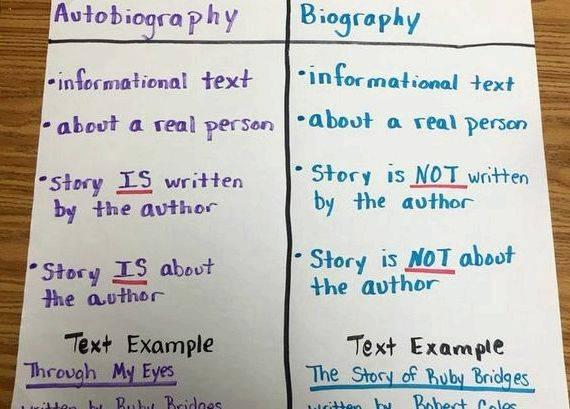



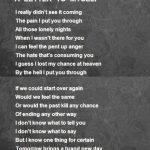 Poems about writing a letter to myself
Poems about writing a letter to myself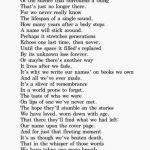 My face in twenty years writing
My face in twenty years writing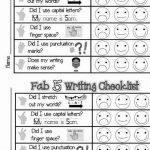 Prompts for writing myths rubric
Prompts for writing myths rubric Writing desks ebay uk my summary
Writing desks ebay uk my summary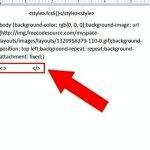 Italics writing generator for myspace
Italics writing generator for myspace






